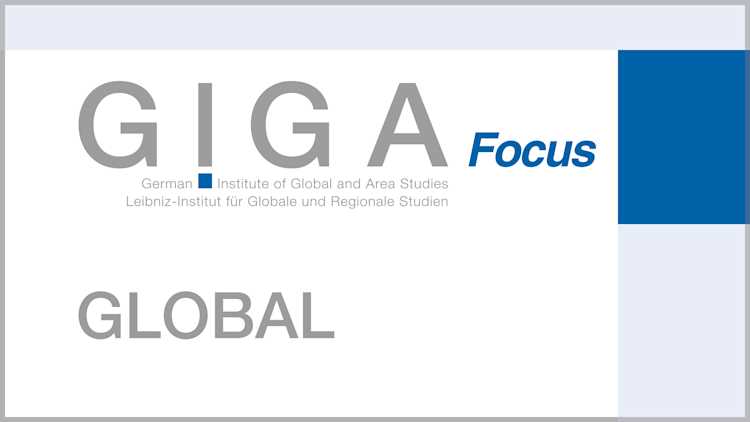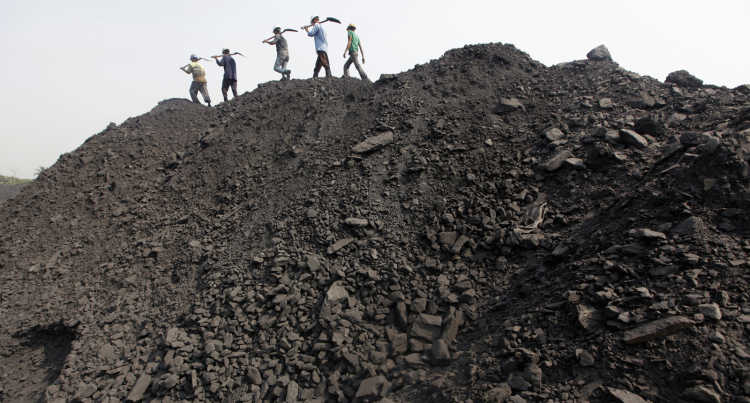- Startseite
- Publikationen
- GIGA Focus
- Not on the "Paris Track": Climate Protection Efforts in Developing Countries
GIGA Focus Global
Das Pariser Klimaabkommen auf Abwegen: Bemühungen zum Klimaschutz in Entwicklungsländern
Nummer 8 | 2016 | ISSN: 1862-3581
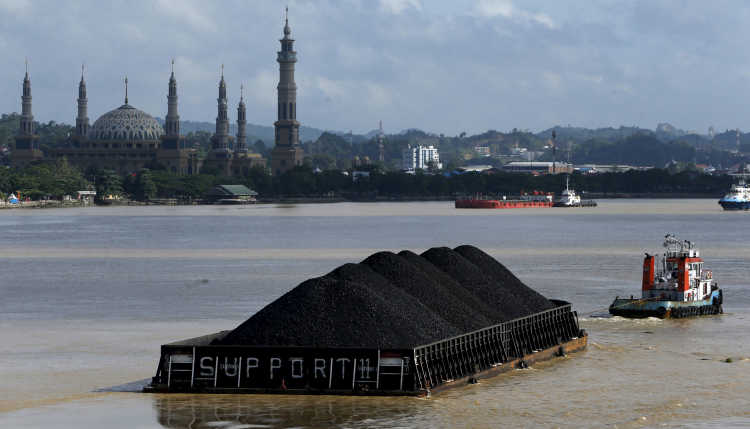
Im Dezember 2015 einigten sich die Regierungschefs aus aller Welt auf ein neues Klimaabkommen mit dem Ziel, den weltweiten Temperaturanstieg auf 2 Grad Celsius zu begrenzen. Ungeachtet des generellen Optimismus nach der Pariser Klimakonferenz und der gutgemeinten neuen Versprechungen, die während der jüngsten Klimakonferenz in Marrakesch gegeben worden sind, steigen die Treibhausgasemissionen in Entwicklungsländern aufgrund des Strebens nach Wohlstand weiter an. Sollten die Herausforderungen der Emissionsreduzierung und der wirtschaftlichen Entwicklung nicht parallel angegangen werden, sind die gewünschten Klimastabilisierungsziele nicht zu erreichen.
Treibhausgasemissionen wachsen weiterhin, was eine Stabilisierung des Klimas gefährdet. Dieses Wachstum kommt nun hauptsächlich aus Entwicklungsländern, von denen bereits viele auf einem CO2-intensiven Entwicklungspfad sind.
Das Pariser Klimaabkommen wird nicht mehr als die Summe seiner Teile sein können. Die globalen geplanten Klimaschutzbemühungen, die aus nationalen Plänen, den sog. „nationally determined contributions“, hervorgehen, werden sehr wahrscheinlich nicht ausreichen, um die Treibhausgasemissionen auf das zur Klimastabilisierung notwendige Niveau zu senken.
Konkrete Schritte zur Absenkung der Treibhausgasemissionen in Entwicklungsländern sind nicht abzusehen. Nationale Klimaschutzbemühungen bestehen entweder nicht oder eingeführte Maßnahmen sind nicht ausreichend, wie wir beispielhaft für Indonesien, Mexiko, Südafrika und Thailand zeigen können.
Die große Lücke zwischen der Zielsetzung des Pariser Abkommens und der Realität vor Ort zeigt erhebliche Schwierigkeiten, die auf dem Weg zu einer Dekarbonisierung der weltweiten Energie- und Transportsysteme bestehen. Hauptverantwortlich hierfür sind die kurzfristigen ökonomischen, politischen und sozialen Kosten von Reformen.
Fazit
Den Entwicklungsländern kann das Streben nach wirtschaftlicher Entwicklung nicht zum Vorwurf gemacht werden. Um den Transformationsprozess zur Verringerung von Treibhausgasemissionen einzuleiten, werden sofortige Politikmaßnahmen notwendig sein. Im Rahmen internationaler Abkommen und Zusammenarbeit müssen nun die aufstrebenden Schwellenländer dabei unterstützt werden, bedeutende Maßnahmen zur Emissionsminderung wie die Besteuerung von CO2 im Rahmen ökologischer Steuerreformen umzusetzen. Gleichzeitig sollte mit Mitteln der Klimafinanzierung für Niedrigeinkommensländer systematisch versucht werden, „Lock-in“-Effekte zu vermeiden.
The Paris Agreement and Developing Countries Emissions
The influence of human activity on the climate is increasingly considered to be secured knowledge. To limit the average global temperature rise to 2 degrees Celsius above pre-industrial levels, global GHG emissions would need to be reduced drastically. By how much each country should reduce its emission level has always been and continues to be a major dispute at the international policy level. Current global GHG emission levels are dominated by low- and mostly middle-income countries: they account for two-thirds of global emissions, though this is rising (Figure 1).
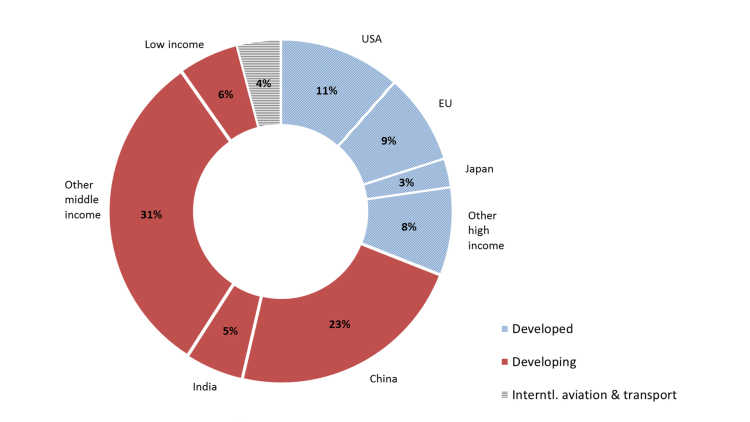
Due to the widely differing understandings of assuming responsibility, international climate negotiations have been deadlocked for years. Despite the importance of a normative discussion on emission responsibility, the low- and, in particular, middle-income countries will have to substantially contribute to climate mitigation even if developed economies undertake major efforts. The situation has been exacerbated by growing evidence that the world is already almost locked into a 1.5 degree Celsius increase until the middle of the century (World Bank 2014).
Major movement occurred at the international policy stage with the adoption of the first-ever universal and legally binding global climate deal at the Paris climate conference in December 2015. Because of quick ratification by a sufficient number of parties, the agreement entered into force (on 4 November 2016) much faster than many anticipated. Unlike the 1997 Kyoto protocol, all states are expected to set mitigation goals, including the large low- and middle-income countries. NDCs are unilaterally determined and supposed to reflect a country’s ability to contribute to mitigation efforts. A look into developing countries’ published intended nationally determined contributions (INDCs) – intended since they were submitted for the Paris climate conference – reveals three major issues which make the assessment of emission reductions and the economic implications thereof difficult. First, emission reduction goals are usually stated relative to a baseline scenario which is easy to adjust to achieve large projected emission reductions. Second, mitigation goals are typically formulated according to two different scenarios. Unilateral goals are less ambitious than goals that can be achieved by drawing on bilateral or multilateral assistance. Third, INDCs, and possibly NDCs, rarely contain any specific policy details or further steps on how emission reductions can be achieved.
In general, most INDCs from developing countries place strong emphasis on economic development, which reflects their legitimate interest in raising the living standards of their populations. This inconvenient truth may threaten successful climate stabilisation. The ratified Paris agreement will only be implemented in 2020, at a time when an ever-larger fraction of energy infrastructure will already be locked into fossil fuels (IEA 2015). The cost of replacing this infrastructure will be very large, and the corresponding investments are unlikely to be undertaken by a country that has to (first) address numerous development challenges.
One year after the Paris agreement and following the subsequent climate conference in Marrakech in November 2016, the issue of unambitious emission reduction targets remains unresolved. In rich countries like Germany, plans for more ambitious national climate policies have come under attack by industry and labour unions, whereas a group of developing countries (organised in the Climate Vulnerable Forum) announced their intention to completely transform their energy systems to renewables as quickly as possible. While correctly applauded for its ambition, this pledge – like many other emission reduction promises – will have to stand the test of reality. Enthusiastic statements in the spotlight of climate conferences are relatively easy to make; rapidly transforming energy systems from fossil fuels to renewables, however, comes at a price that many low- and middle-income economies are unable or unwilling to pay – at least by themselves.
Development and Emission Trajectories
In terms of human development, the past three decades have been an enormous success in large parts of the world due to high economic growth in many developing countries. The worldwide poverty headcount ratio at USD 1.9 per day decreased from 44 per cent in 1981 to 12.7 per cent in 2012. A large share of the global population that escaped extreme poverty can be found in India and especially China, though many other developing countries have also experienced substantial reductions in extreme poverty. Figure 2 reveals several middle-income countries (i.e. Indonesia, Mexico, South Africa, and Thailand) that can be considered major emitters among the “other middle-income” group in Figure 1. All of these countries have seen economic growth that was accompanied by a considerable reduction in extreme poverty over the past 20 years. At the same time, the two fast-growing Asian economies of Indonesia and Thailand exhibit growth rates in emissions per capita that even exceed the growth rate in gross domestic product (GDP) per capita. We use the experiences of these countries with regard to their development paths, energy consumption, and climate change policies to illustrate some of the key challenges faced by developing countries in contributing to climate change mitigation.
Figure 2 shows that the above-mentioned Asian economies are not the only cases in which high GDP growth rates have been accompanied by sharp increases in CO2 emissions. It appears that the income–emission trajectories of countries like China, India, and Indonesia closely track the historical emissions of European developed economies (see Figure 3). South Africa’s energy system, which relies almost exclusively on coal and has much higher per capita emissions, is an exception here.
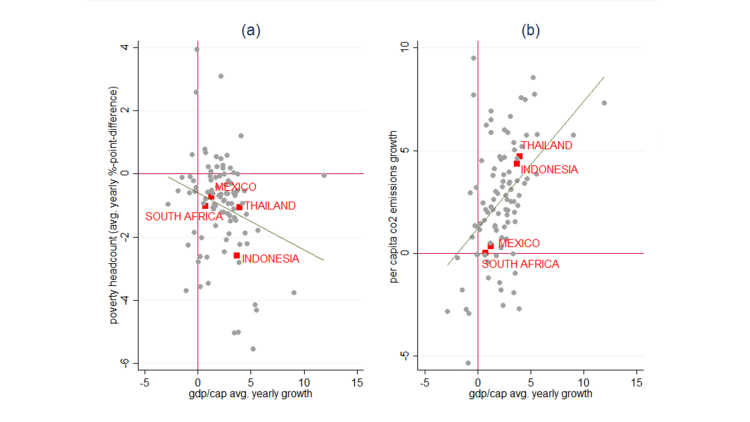
Against this background, the less ambitious emission reduction targets from developing countries, as exemplified by INDC communications, are hardly surprising. As a result, the aggregate emission reduction pledges in the Paris agreement will not come even close to achieving the maximum temperature increase of 2 degrees Celsius. Several global simulation studies have come to the conclusion that even with the currently planned worldwide emission reductions, the temperature increase will more likely be 3–3.5 degrees Celsius (UNEP 2016; Rogelj et al. 2016).
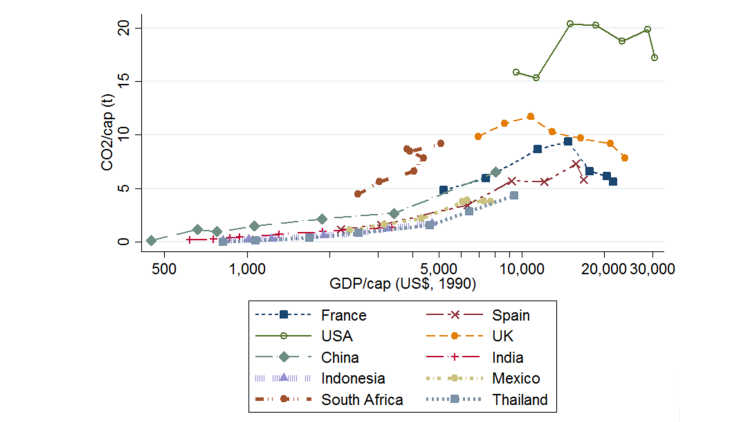
Because energy use is the main driver of GHG emissions, the decarbonisation of energy systems is regarded as crucial for mitigating climate change. There are ongoing debates about the costs and (co-)benefits associated with transforming energy systems into low-carbon systems based on renewable energy. Recent studies by the World Bank and the Organisation for Economic Co-operation and Development (OECD) have suggested that if climate protection measures are able to reorient growth paths towards “low-carbon development,” they could have positive effects on economic growth (OECD 2011; Hallegatte 2012). In particular, decentralised energy systems that rely on renewable energy sources have been identified as potential providers of universal access to energy and creators of win-win situations in the fight against poverty, climate change, and environmental degradation (Casillas and Kammen 2010). Renewable energy will play the key role in the transformation process towards large-scale low-carbon energy systems. However, and despite its huge potential, renewable energy is often more expensive than fossil fuels – albeit wind energy and solar energy are becoming increasingly competitive (IRENA 2015). This partly explains why fossil fuels continue to play a central role in economic development. Yet, while the costs of renewables matter, other economic, technological, and institutional factors also hinder progress in decarbonising energy systems. This can be seen amongst the mid-sized middle-income emerging economies that we have studied in more detail.f
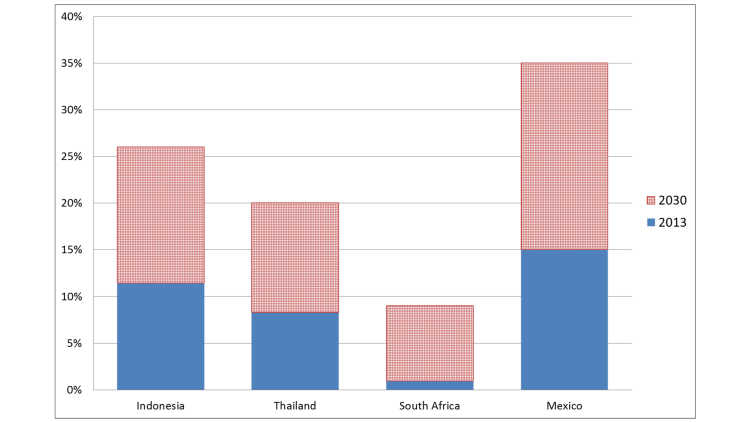
Most middle-income economies have plans to significantly increase the share of renewable energy in total electricity production (Figure 4). With the exception of South Africa, most of these plans are fairly ambitious. Mexico plans to provide 35 per cent of total electricity via renewable energy by the year 2030. Other middle-income countries have also announced to reach ambitious renewable targets by 2030. India, for instance, wants renewables to account for 40 per cent of its total electricity production by 2030. Considering the fact that there are only 13 years left to meet these targets and the fact that wind and solar energy entail higher electricity production costs, little is known about how these countries plan to reach these goals.
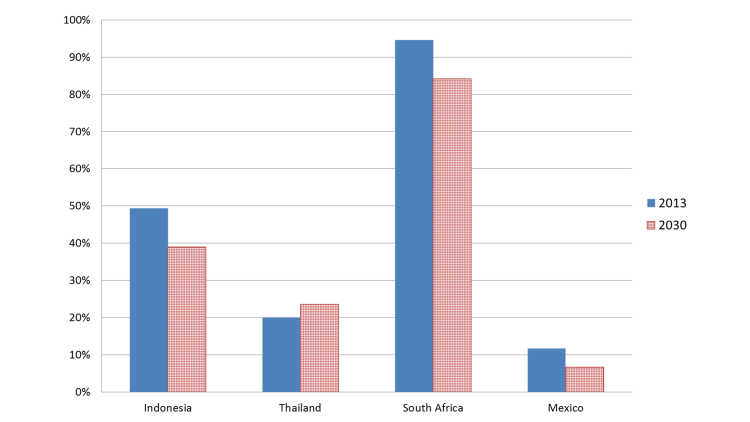
At the same time, most middle-income countries with aspirational renewable targets further invest in coal-fired power plants. Figure 5 shows an illustrative projection of what the planned addition of coal-fired power plant capacity would mean for the share of coal-based electricity production (extrapolating average electricity-production growth rates for the 15 years up until 2030). In Indonesia and South Africa the resulting shares would decline by around 10 percentage points. This decline is down to reduced growth of additional coal capacity rather than an absolute reduction in electricity from coal. For some of these countries (e.g. Indonesia and Thailand) growth rates in total installed coal capacity are above 100 per cent. In Thailand the share of coal in total electricity production may even increase. Another case in point is India, where there are plans to massively expand electricity production from coal in order to satisfy the growing energy demand from industry and the population. Other countries have smaller planned growth rates, but the reasons and implications differ. While China and South Africa already have high levels of coal use in their power sectors, they still plan to increase capacity by large absolute levels. This is particularly problematic in the case of China due to the size of the economy. Mexico, in contrast, is the only large middle-income country that is not investing in further coal plants, supposedly directly reflected in ambitious renewable energy targets. The main reason, however, is that Mexico has abundant gas reserves – a fuel that is planned to be the backbone of the power sector for decades to come. Although often described as a transition energy source due to having a lower carbon content, increased energy demand caused by economic growth will also significantly increase total carbon emissions. Ultimately, the fact that emissions in these countries can be expected to rise significantly despite the propagated growth of renewable energy supply, reflect the deceptive character of the Paris agreement, which is a consequence of the use of business-as-usual scenarios in NDCs.
These developments put at risk the success of the Paris agreement, particularly since (i) investments in the power sector require long-term commitments and (ii) a major share of the energy infrastructure in developing countries will already be based on fossil fuels by 2020 (IEA 2015). Additionally, most major middle-income emitters go beyond this point and plan to further deploy coal-fired power plants. The “renaissance of coal” and the rise of gas thus fill the gaps left by unambitious renewable targets that are insufficient to secure emission reductions. Even worse, these targets are largely promises with little legislative backup.
What to Do? Instruments and Barriers to Mitigation
The above account shows that there is a huge gap between the objectives of the Paris agreement and what is happening “on the ground.” In our view this gap mirrors a huge discrepancy between the global policy discourse on “transforming the world” and what seem to be politically feasible and practical solutions and policies. We believe that there are significant barriers to decarbonising the world’s energy and transport systems, which are typically linked to the short-term economic and political costs of reform. These barriers will need to be identified, understood, and systematically tackled by placing emphasis on the effectiveness of contributing to global mitigation without ignoring the costs.
To enable economic growth while reducing GHG emissions, there are only a limited number of policy instruments available for countries willing to act. When renewable energy is more expensive than fossil energy, offsetting the price difference by taxing fossil fuels or subsidising the deployment of renewables are the two main options. Any such policy will typically involve economic costs and how these costs are distributed is crucial for its political feasibility and success.
Taxing fossil energy will make energy used by households more expensive. In developing countries, since poor people usually use less energy processing devices (e.g. fridges and cars) than rich people, energy price rises hit the rich harder than the poor. Although this may sound like good news, income losses for the poor are a reality that needs to be tackled. In the absence of income tax systems with full information on individual incomes, identifying appropriate policies to redistribute tax revenue is a challenge on its own. Practical issues in identifying the losers of potential energy price reforms is a large disincentive for more ambitious climate policies – a point that is often overlooked in climate policy discussions. Furthermore, political decisions may not be taken in favour of a poor majority, but rather to cater to the interests of richer, typically urban, elites.
Another effect on household income and welfare may come from the labour market. Higher energy prices for industrial sectors may lead to reductions in wages, thus hurting workers. On top of that, with more ambitious climate policies, unemployment may rise if cost pressures in energy-intensive sectors lead to employment losses. The claim that so-called green jobs will compensate for job losses in traditional industries is questionable. While renewable energy supply indeed requires more manpower, costs are currently higher, and the net job effect may at best be neutral. Additionally, most developing countries, with the exception of China and India, have little to offer in terms of exporting renewable energy technologies, which appears to be essential to the realisation of a green job miracle. It is a reasonable assumption that governments in developing countries are well aware of these potential problems. Even small steps towards a low-carbon economy may prove difficult because of the political economy of energy pricing. This is clearly illustrated by the following examples of the recent experiences of emerging important emitters in terms of key mitigation policies, particularly with regard to energy prices and green fiscal reform.
The difficulty in abolishing the harmful and wasteful common practice of granting fossil fuel subsidies in many developing countries exemplifies the political economy barriers to low-carbon transformation. Fuel subsidies not only impose high costs on state budgets – in 2011 India and China spent about USD 34 billion and USD 20 billion, respectively, on subsidising energy consumption (OECD-IEA 2014) – and undermine efforts to decarbonise energy systems, they also reduce incentives for energy efficient consumption and production. Furthermore, fossil fuel subsidies are not an efficient instrument to fight poverty. Instead, they have been found to be regressive and typically disproportionately benefit richer households. Nevertheless, energy subsidy reforms often face public opposition since price rises of important energy items, such as petrol, scare large parts of the population more than the unequal distribution of subsidies.
Indonesia has long been a case in point, as energy prices for households there have been set below international market price levels by successive governments for decades. In years with high oil prices, this has resulted in massive subsidy payments, accounting for up to 35 per cent of total government spending. As a result of this fiscal pressure, various governments tried to reduce energy subsidies over time but faced public opposition when subsidy cuts were implemented. Facilitated by dramatically falling oil prices in 2014, the newly elected government announced a complete phaseout of energy subsidies. Since then, gasoline has been sold at a price closer to international market prices. Although other energy sources, such as electricity and liquefied petroleum gas (LPG), remain heavily subsidised, there are plans to reduce subsidies for these in the future as well. If the government were to pursue an even more ambitious climate policy by levying taxes on fossil energy, richer Indonesians would be hit harder than the poor since they use more gasoline and electricity. However, this does not imply that the poor would not be affected. With the current growth in electrification and private motorised transport, a larger part of the population is projected to benefit from low energy prices. In any case, the energy subsidy cuts which are currently being implemented have had negligible effects on emissions since the price of oil remains at low levels. Should oil prices rise again, the political feasibility of abolishing energy subsidies will be put to the test.
In contrast to many other middle-income countries, Mexico has signalled a strong commitment to achieving climate mitigation targets. It was the first developing country to pass a climate change law in 2012, well in advance of the Paris agreement. Relative to emissions in 2000, Mexico wants to reduce its emissions by 30 per cent by 2020 and by 50 per cent by 2050. Despite the ambitious targets, there is no official plan on how to achieve these goals. The recently introduced battery of energy taxes, often termed the “Mexican carbon tax,” could serve as the basis of further policy steps – though the current tax rates are too small to make any measurable difference to emissions. In the Mexican case, future tax increases may also hurt the rich more than the poor since direct energy demand, in particular for gasoline, is higher for richer households.
A carbon tax is also at the centre of national climate policy debates in South Africa. While originally planned to be implemented in 2013, the country’s carbon tax legislation has been on hold since then. When the tax will be introduced and details about the size of the tax, the tax base, and possible exemptions all remain unclear. Considering the particularly high carbon intensity of the South African power sector and the abundance of cheap domestic coal, it is hardly surprising that the government is in no hurry to start the decarbonisation process through this important fiscal instrument. South Africa is thus likely to maintain its status as the highest per capita emitter amongst developing countries for the foreseeable future.
There are a number of other middle-income countries with quickly rising GHG emissions which have moderately ambitious climate targets (as announced in their INDCs) but often have little to say about specific policies. Thailand, for example, has an almost complete absence of legislation dealing with climate policy but has a reduction target of 20 per cent by 2030 relative to a baseline scenario. Like in plenty of other countries, it is simply unclear how reduction targets can be achieved in an environment of clear development priorities and a lack of political will to deal with, inter alia, environmental issues.
Certainly, ambitious climate policies have the potential to create serious trade-offs vis-à-vis development objectives. The identification of compensation schemes in the absence of universal income tax systems is one major challenge, but more critical issues wait behind the climate policy curtain. For most developing countries, price increases for modern cooking fuels have adverse income effects for the poor, but this is not the only problem. Low-income households may quickly switch to traditional fuels (e.g. wood, dung, or charcoal) should the price of modern energy rise. This response creates two additional problems which cannot be directly addressed by redistribution mechanisms. First, the use of traditional fuels usually comes with indoor pollution and associated negative health outcomes. Second, traditional biofuels potentially put more pressure on land use and deforestation, which then negatively affects the emission balance of climate policy. Leaving energy supply for households subject to market forces does not appear to be the right answer in this case. Governments will have to make sure that modern energy remains affordable to the population while addressing climate protection.
Lessons Learnt: Focus on Feasible Mitigation Actions That Matter
The above account shows the urgent need for more ambitious mitigation actions in developing countries. It also illustrates the challenges of implementing such actions in the context of important trade-offs between mitigation and economic development. As exemplified by Mexico and South Africa, it is not primarily a matter of (the lack of) political or administrative capacity to introduce climate policies – a domestic carbon tax is technically not more complicated than existing tax regulations. The actual problems arise when effective climate policies have real impacts on the energy sector and the economy at large. These impacts bear potential risks, such as adverse effects on poverty through higher consumption prices, lower wages, or unemployment, which are likely to be unpopular and thus prevent governments from acting.
More ambitious national climate policies in developing countries are thus unlikely to materialise in the absence of international support from industrialised countries. This support, subsumed under the term climate finance, is a key element of current climate change talks. The international community aims to mobilise USD 100 billion a year for mitigation and adaptation in developing countries. Much of the discussion on climate finance has centred on the question of how much developed countries should pay and where the money should come from (Steckel et al. 2016). This discussion must now shift to the question of how developing countries can be supported in implementing more ambitious climate policies.
Along these lines, an international coalition of governments, institutions, and civil society groups announced the NDC Partnership at the Marrakech climate conference in November 2016. Co-chaired by Germany and Morocco, this new initiative claims to provide a support centre for developing country governments that are willing to implement climate policies. Although such initiatives are well intentioned and move the agenda in the right direction, such small-scale project-based strategies fail to address the order of magnitude of the problem. Effective climate policies that achieve measurable effects will require increasing prices for carbon intensive energy and goods through market-based instruments, such as carbon taxes or emission trading schemes. International cooperation should support this type of reform by providing transparent and clear support mechanisms. One practical mechanism could be providing developing countries with direct budget support which is conditional on them implementing policies that reduce GHG emissions. Such grants could be administered through a new organisation (e.g. a climate fund) or through existing multilateral institutions (e.g. the World Bank or regional development banks).
Unfortunately, the currently discussed USD 100 billion for both mitigation and adaption will not be enough. If the rich citizens of the world want to leave their children and grandchildren a world with a stable climate, they will have to pay for it. Ideally, they will do so in the most efficient way: by supporting mitigation efforts in developing countries where the costs of reducing GHGs are typically much smaller than in richer economies. With time running out, getting to know the real costs both of ambitious climate stabilisation targets and of emissions in developing countries should be a priority for governments in developed countries. These efforts should include providing climate finance to low-income countries despite their low emission levels. For these countries, decarbonisation processes should be started earlier to avoid the costly lock-in effects associated with replacing fossil fuel power plants and the corresponding infrastructure.
The single pieces of national climate policies could at some point be combined to form an international carbon market that would guarantee emission stabilisation in the long run. In the meantime, developed countries should not limit their mitigation efforts to supporting developing countries’ climate policies. They also need to speed up their own rates of decarbonisation and to invest more in advancing renewable energy technologies, as the current cost differences between fossil fuels and renewables are still the major obstacle to decarbonising the global energy system.
Fußnoten
Literatur
Casillas, Christian, and Daniel M. Kammen (2010), The Energy-Poverty-Climate Nexus, in: Science, 330, 6008, 1181–1182.
CDIAC (2013), Fossil-Fuel CO2 Emissions by Nation, Carbon Dioxide Information Analysis Centre, http://cdiac.ornl.gov (24 November 2016).
Coalswarm (2016), Global Coal Plant Tracker, http://endcoal.org/global-coal-plant-tracker/ (24 November 2016).
Hallegatte, Stéphane, Geoffrey Heal, Marianne Fay, and David Treguer (2012), From Growth to Green Growth - a Framework, National Bureau of Economic Research Working Paper, No. 17841.
IEA (2015), World Energy Outlook – Special Report: Energy and Climate Change, Paris: International Energy Agency.
IRENA (2015), Renewable Power Generation Costs in 2014. Technical Report, International Renewable Energy Agency.
OECD (2011), Towards Green Growth, Paris: Organisation for Economic Co-operation and Development.
OECD-IEA (2014), Fossil Fuel Subsidies and Other Support, www.oecd.org/site/tadffss (24 November 2016).
Olivier, Jos G. J., Greet Jansen, Marilena Muntean, and Jeroen A. H. W. Peters (2015), Trends in Global CO2 Emissions: 2015 Report, PBL Netherlands Environmental Assessment Agency.
REN21 (2016), Renewables 2016 Global Status Report, Paris: REN21 Secretariat.
Rogelj, Joeri, Michel den Elzen, Niklas Höhne, Taryn Fransen, Hanna Fekete, Harald Winkler, Roberto Schaeffer, Fu Sha, Keywan Riahi, and Malte Meinshausen (2016), Paris Agreement Climate Proposals Need a Boost to Keep Warming Well below 2 °C, in: Nature, 534, 631–639.
Steckel, Jan Christoph, Michael Jakob, Christian Flachsland, Ulrike Kornek, Kai Lessmann, and Ottmar Edenhofer (2016), From Climate Finance towards Sustainable Development Finance, Wiley Interdisciplinary Reviews: Climate Change.
The Maddison-Project (2013), Statistics on World Population, GDP and Per Capita GDP, 1–2008 AD, 2013 version, www.ggdc.net/maddison/maddison-project/home.htm (24 November 2016).
UNEP (2016), The Emissions Gap Report 2016, Nairobi: United Nations Environment Programme.
World Bank (2016), Word Development Indicators, http://databank.worldbank.org/data/reports.aspx?source=world-development-indicators (24 November 2016).
World Bank (2014), Turn Down the Heat: Confronting the New Climate Normal, Washington, D.C.: World Bank.
Regionalinstitute
Forschungsschwerpunkte
Wie man diesen Artikel zitiert
Lay, Jann, und Sebastian Renner (2016), Das Pariser Klimaabkommen auf Abwegen: Bemühungen zum Klimaschutz in Entwicklungsländern, GIGA Focus Global, 8, Hamburg: German Institute for Global and Area Studies (GIGA), http://nbn-resolving.de/urn:nbn:de:0168-ssoar-51656-8
Impressum
Der GIGA Focus ist eine Open-Access-Publikation. Sie kann kostenfrei im Internet gelesen und heruntergeladen werden unter www.giga-hamburg.de/de/publikationen/giga-focus und darf gemäß den Bedingungen der Creative-Commons-Lizenz Attribution-No Derivative Works 3.0 frei vervielfältigt, verbreitet und öffentlich zugänglich gemacht werden. Dies umfasst insbesondere: korrekte Angabe der Erstveröffentlichung als GIGA Focus, keine Bearbeitung oder Kürzung.
Das German Institute for Global and Area Studies (GIGA) – Leibniz-Institut für Globale und Regionale Studien in Hamburg gibt Focus-Reihen zu Afrika, Asien, Lateinamerika, Nahost und zu globalen Fragen heraus. Der GIGA Focus wird vom GIGA redaktionell gestaltet. Die vertretenen Auffassungen stellen die der Autorinnen und Autoren und nicht unbedingt die des Instituts dar. Die Verfassenden sind für den Inhalt ihrer Beiträge verantwortlich. Irrtümer und Auslassungen bleiben vorbehalten. Das GIGA und die Autorinnen und Autoren haften nicht für Richtigkeit und Vollständigkeit oder für Konsequenzen, die sich aus der Nutzung der bereitgestellten Informationen ergeben.


